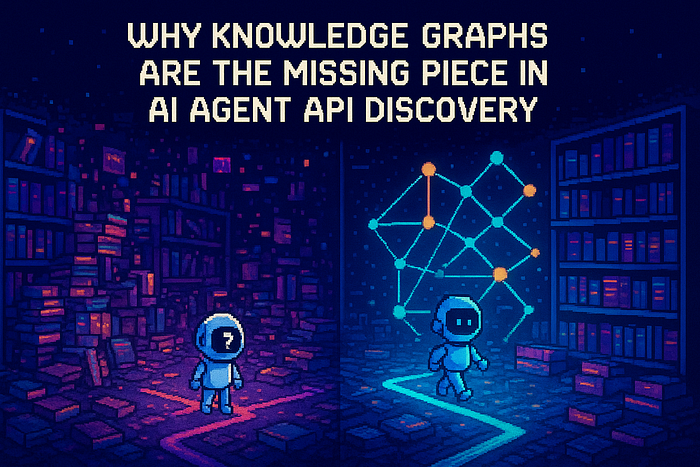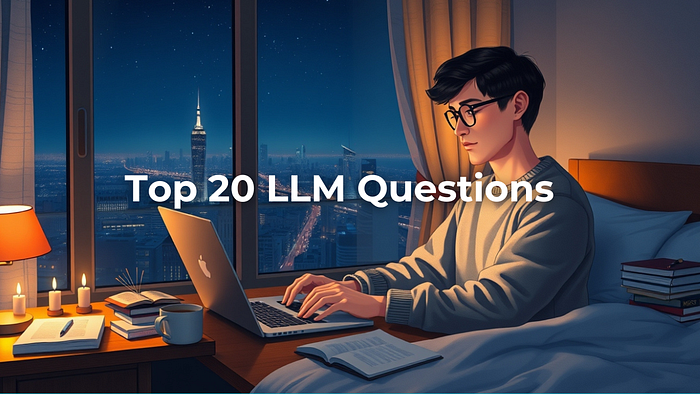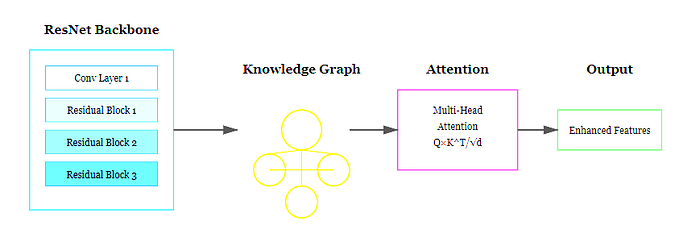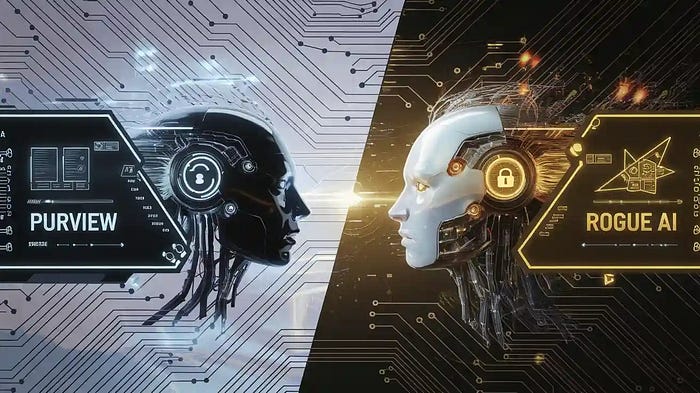#63: Full of Frameworks: APDTFlow, NSGM, MLFlow, and more!
Author(s): Towards AI Editorial Team
Originally published on Towards AI.
Good morning, AI enthusiasts! This week, we are introducing new frameworks through hands-on guides such as APDTFlow (addresses challenges with time series forecasting), NSGM (addresses variable selection and time-series network modeling), and MLFlow (streamlines ML workflows by tracking experiments, managing models, and more). You will also find useful tools from the community, collaboration opportunities for diverse skill sets, and, in my industry-special What’s AI section, I will dive into the most sought-after role: LLM developers. Enjoy the read!
What’s AI Weekly
The demand for LLM Developers is growing rapidly, and because this field is so new, there are very few experts out there. But who exactly is an LLM developer, and how are they different from software developers and ML engineers? This week in What’s AI, I dive into what this specialized role looks like, how to develop the skills for it, and what the future of work will look like. Well, briefly, software developers focus on building traditional applications using explicit code. Machine learning engineers specialize in training models from scratch and deploying them at scale. LLM Developers, however, operate in a middle ground. They customize existing foundation models, use prompt engineering to guide outputs, and build pipelines that integrate techniques like RAG, fine-tuning, and agent-based systems. Read the complete article here or watch the video on YouTube!
— Louis-François Bouchard, Towards AI Co-founder & Head of Community
Learn AI Together Community section!
Featured Community post from the Discord
Cmenser has built Text Loom, a fun workspace for creating networks that manage queries and build on them, all from your terminal. It provides a powerful environment for building and manipulating node-based workflows through a text interface. Check it out on GitHub and support a fellow community member. If you have any questions or feedback, share it in the thread!
AI poll of the week!
With Nvidia’s recent drop and political tensions, do you think the company will continue to thrive with its GPUs and offers? Let’s discuss this in the Discord thread!
Collaboration Opportunities
The Learn AI Together Discord community is flooding with collaboration opportunities. If you are excited to dive into applied AI, want a study partner, or even want to find a partner for your passion project, join the collaboration channel! Keep an eye on this section, too — we share cool opportunities every week!
1. Cyberbubblegum_77929 is working on multiple advanced projects, such as implementing something similar to tinyGPT, building an AI research assistant, developing face detection software, and creating a clone of Google Translate. If these ideas sound exciting, join them and improve your project portfolio. Contact them in the thread for more information!
2. Laufeyson5190 is learning ML basics and is inviting other beginners to create a study group. If you are starting out and prefer learning in a group, reach out in the thread!
3. Rushi8208 is building a team for an AI-based project. If you are skilled in Python or computer vision, diffusion models, or GANS, you might be a great fit. Connect in the thread to learn more!
Meme of the week!
Meme shared by ghost_in_the_machine
TAI Curated section
Article of the week
Explaining Transformers as Simple as Possible through a Small Language Model By Alex Punnen
This article simplifies the complex Transformer architecture, focusing on its foundational concepts like vector transformations, self-attention, and multi-head attention. It begins by explaining vector transformations, a core idea in neural networks, and contrasts traditional methods like SVMs with learned feature mappings in Transformers. It then dives into self-attention, highlighting its role in creating contextual embeddings by assigning importance to tokens based on their sequence. It also explains how Transformers achieve scalability through vectorization and parallelization, enabling efficient training on GPUs. It includes practical examples, including a small language model trained on the TinyStories dataset to demonstrate these concepts.
Our must-read articles
1. A Practical Approach to Time Series Forecasting with APDTFlow By Yotam Braun
Forecasting time series data involves challenges such as sequential dependencies, seasonal effects, and non-stationary behavior. The article introduces APDTFlow, a modular framework designed to address these issues. It explains key components such as multi-scale decomposition, Neural ODEs for modeling continuous dynamics, probabilistic scale fusion, and a Transformer-based decoder for accurate predictions. The article also discusses how APDTFlow can be applied to experimental and real-world forecasting tasks through examples and code.
2. Investigating Transformer Attention and Reinforcement Learning Dynamics Using Self-generated Structural Data By Shenggang Li
This article explores using structured synthetic data to enhance the development of LLMs by focusing on algorithmic improvements rather than noisy, real-world datasets. It introduces Multi-Head Latent Attention (MLA) and Group Relative Policy Optimization (GRPO) to optimize attention mechanisms and reinforcement learning strategies. Inspired by AlphaGo, the study employs multi-path exploration and Monte Carlo Tree Search (MCTS) to refine token relationships and improve efficiency. It also highlights applications in recommendation systems, where dynamic attention mechanisms adapt to user behavior. The approach enables controlled experimentation by leveraging synthetic data, reducing computational costs while improving LLM performance, with potential scalability to real-world NLP tasks.
3. A Neural Sparse Graphical Model for Variable Selection and Time-Series Network Analysis By Shenggang Li
This article introduces the Neural Sparse Graphical Model (NSGM), a framework designed to address variable selection and time-series network modeling for high-dimensional data. NSGM combines a sparse adjacency matrix to identify key relationships among variables with a neural network to capture nonlinear dependencies. The model is particularly suited for stock price forecasting, gene interaction analysis, and demand prediction. It employs lagged temporal aggregation and sparsity penalties to ensure interpretability and efficiency. It also provides implementation details, including training results, validation metrics, and code, demonstrating NSGM’s ability to model complex multi-variable dynamics effectively.
4. 🚀 MLflow Experiment Tracking: The Ultimate Beginner’s Guide to Streamlining ML Workflows By Harshit Kandoi
This article provides a beginner-friendly guide to MLflow, designed to streamline machine learning workflows by tracking experiments, managing models, and ensuring reproducibility. It highlights MLflow’s core components: Tracking, Projects, Models, and Model Registry, explaining how they simplify experiment logging, parameter tracking, and model deployment across frameworks like Scikit-learn, TensorFlow, and PyTorch. It also covers setting up MLflow locally or in cloud environments, automating workflows, and deploying models using Flask, Docker, or AWS SageMaker. Practical tips for organizing experiments and leveraging MLflow for scalable, collaborative ML projects are included.
If you are interested in publishing with Towards AI, check our guidelines and sign up. We will publish your work to our network if it meets our editorial policies and standards.
Join thousands of data leaders on the AI newsletter. Join over 80,000 subscribers and keep up to date with the latest developments in AI. From research to projects and ideas. If you are building an AI startup, an AI-related product, or a service, we invite you to consider becoming a sponsor.
Published via Towards AI
Take our 90+ lesson From Beginner to Advanced LLM Developer Certification: From choosing a project to deploying a working product this is the most comprehensive and practical LLM course out there!
Towards AI has published Building LLMs for Production—our 470+ page guide to mastering LLMs with practical projects and expert insights!

Discover Your Dream AI Career at Towards AI Jobs
Towards AI has built a jobs board tailored specifically to Machine Learning and Data Science Jobs and Skills. Our software searches for live AI jobs each hour, labels and categorises them and makes them easily searchable. Explore over 40,000 live jobs today with Towards AI Jobs!
Note: Content contains the views of the contributing authors and not Towards AI.














